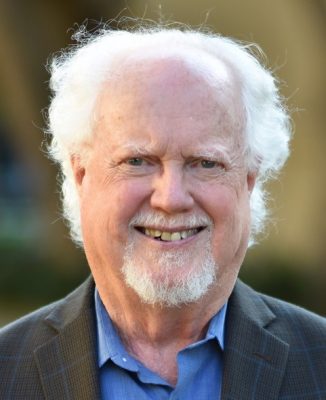
Topological Elastic Metamaterials: An introduction and application to the analog Quantum Spin Hall Effect
Date: April 25, 2025; Time: 2:30 PM Location: PWEB 175
Abstract: Inspired by recent discoveries of topological phases of matter in quantum physics, there has been a rapidly growing research effort to uncover analog mechanisms in classical wave physics, including acoustics and elastodynamics. By properly acting on time reversal, chiral, and particle-hole symmetries, material systems obeying the laws of classical mechanics can deliver dispersion properties reminiscent of selected quantum mechanical systems. Among the many remarkable characteristics of these materials, their ability to support unidirectional propagating waves is particularly significant and it could serve as a foundational property to achieve waveguides that are robust even in presence of disorder and defects. This talk will discuss the general concept of a topological elastic metamaterial, the foundational role played by the geometric phase, and finally present a selected example of a topological elastic metamaterial from recent works conducted in Prof. Semperlotti’s group. More specifically, a topological elastic waveguide inspired by a mechanism analog to the quantum Spin Hall effect will be discussed. A combination of theoretical, numerical, and experimental results will be presented to illustrate how unidirectional propagating guided modes can be achieved at the interface between elastic material phases having different topological order. These so-called edge states are topologically protected against backscattering, hence allowing efficient elastic energy transmission even in presence of defects and disorder. Such unique propagation properties could have a profound impact on the development of many real-world applications and on the performance of practical devices whose operating mechanism is rooted in the physics of acoustic and elastic waves.
Biographical Sketch: Dr. Fabio Semperlotti is a Professor in the School of Mechanical Engineering and the Perry Academic Excellence Scholar at Purdue University; he also holds a courtesy appointment in the School of Aeronautics and Astronautics Engineering. He directs the Structural Health Monitoring and Dynamics laboratory (SHMD) where he conducts, together with his group, research on several aspects of structures and materials design including structural dynamics and wave propagation, elastic metamaterials, structural health monitoring, and computational and experimental mechanics. His research has received financial support from a variety of sources including the National Science Foundation, the Department of Defense, the Department of Energy, and industrial sponsors. Dr. Semperlotti was the recipient of the National Science Foundation CAREER award (2015), the Air Force Office of Scientific Research Young Investigator Program (YIP) (2015), the DARPA Young Faculty Award (YFA) 2019, and the ASME C.D. Mote Jr. Early Career Award 2019. Dr. Semperlotti received a M.S. in Aerospace Engineering (2000), and a M.S. in Astronautic Engineering (2002) both from the University of Rome “La Sapienza” (Italy), and a Ph.D. in Aerospace engineering (2009) from the Pennsylvania State University (USA). In 2010, he was a postdoctoral research associate in the Mechanical Engineering department at the University of Michigan. Prior to joining Penn State, Dr. Semperlotti served as a structural engineer for a few European aerospace industries, including the French Space Agency (CNES), working on the structural design of space launch systems and satellite platforms.
